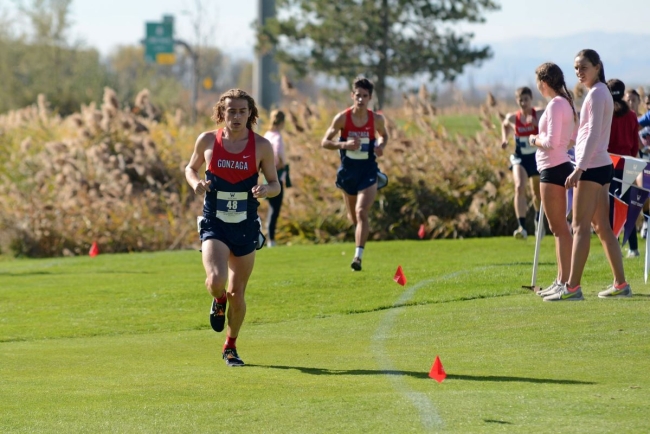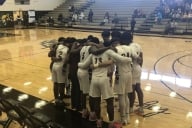You have /5 articles left.
Sign up for a free account or log in.

Bennett Gagnon, a cross-country and track and field runner for Gonzaga University
Joe Gagnon
Bennett Gagnon said he couldn’t sleep the night the National Collegiate Athletic Association announced that its leaders would discuss allowing spring athletes to continue competing, even if their eligibility expires in 2020.
Gagnon, a fifth-year track and field runner for Gonzaga University, lay awake thinking about what the extension could mean for him and his teammates. He had already taken out a $30,000 loan to pay tuition for a one-year master of business administration program to continue his education and be eligible to run outdoors this spring, a season that was canceled by the NCAA because of the coronavirus pandemic. Could he afford to forgo another year without a full-time job, take out another loan to pursue a third degree and continue the dream he signed up for at age 17?
“At what point is the sixth year worth it to a kid who loves being an athlete and wants to run personal records in that jersey again?” Gagnon said. “At what point is it financially and careerwise a bad decision to keep running? I’m not a career runner. I’m not going to be a professional. But I love it.”
Gagnon and other college athletes are consumed with questions for the NCAA and its divisional leadership on how exactly an eligibility extension would work for students who play baseball, softball, tennis, lacrosse and other spring sports that did not get to compete this year. Athletics directors and coaches are confronting the possibility that if allowed by the NCAA to grant more scholarships, they might not have enough funds to give both to seniors who would be granted an additional year and to freshmen who are starting their collegiate careers.
It seems like the NCAA had not thought through how the extensions would work when it announced the decisions on March 13, said Timothy Russell, CEO for the Intercollegiate Tennis Association, the governing body of college tennis. Divisions II and III granted spring athletes an additional season or semester of eligibility, while Division I leadership “agreed that eligibility relief is appropriate for all Division I student athletes who participated in spring sports” and said details would be “finalized later,” according to a news release.
The divisions did not promise an increase in the number of athletic scholarships each program is permitted to give, which vary depending on the sport. As discussions continue, “the devil will be in the details,” Russell said.
Division I athletic directors have been contemplating the logistics of the extension: adjustments to the NCAA’s existing scholarship and roster limits, whether the extension would apply to all athletes or only to graduating seniors, and where the money for additional scholarships would come from, said Gene Taylor, director of athletics at Kansas State University. During a call with other athletics directors in the Big 12 conference, leaders expressed more willingness to work on extensions for spring athletes than for winter athletes, who completed “90 percent of their season” before most championship cancellations took place, Taylor said.
“As heartbreaking as it is, I don’t know how much support there is for doing it for the winter sports,” Taylor said. “Somewhere along the line we’re going to have to make a pretty tough call … Do you give the new freshmen a scholarship; do you tell the seniors they can stay without the scholarship?”
A petition created by Gagnon asks the NCAA to adjust its rules and allow spring athletes who finished degrees in 2020 to compete for another year without being enrolled in classes, expand its scholarship limits and compensate universities for additional scholarships and athletes for room and board costs. But Russell said it’s “not at all realistic” to think the NCAA will pay for additional scholarships, as it faces financial challenges of its own.
The ideal situation would be for seniors to return next year with their current scholarship or better, using funds saved from the canceled season, said Craig Keilitz, executive director of the American Baseball Coaches Association, a professional organization for amateur baseball coaches.
“I hope that the administrators, presidents, athletic directors and so forth can make the right decision -- do what’s right for the student athlete,” Keilitz said. “It very simply comes from all the budget money saved from not traveling, not playing, not feeding the student athletes for the rest of this year. That would greatly outweigh the amount in scholarships saved for the seniors.”
Operations expenses will go down for spring sports, but athletic departments also greatly depend on allocations from the various athletic conferences that institutions compete in, said Nick Schlereth, a recreation and sport management professor at Coastal Carolina University who studies collegiate athletics cash flow. The conferences receive shares each year from the NCAA, and with the cancellation of the men’s basketball tournament, worth about $800 million in revenue, these top-down contributions will rely on how much the NCAA is able to recoup with its business interruption insurance, credit lines and reserves, Taylor said.
“I don’t think we can put it on one group and say, ‘You have to cover us,’” Taylor said. “We have to find ways to pitch in collectively as a group. If we try to put it on one person or group, we’ll never get the right answer.”
Individual institutions could also face losses if they rely on spring ticket revenue, such as at colleges with successful baseball programs, Schlereth said. Some institutions may have hoped to benefit from the men’s basketball tournament, which each year brings media exposure and name recognition to lesser-known institutions, he said. Additionally, the further teams proceed in the tournament, the more money their conferences receive from the NCAA’s basketball fund, Schlereth said.
Possible solutions to losses in athletics departments could include shifting academic resources or increasing the student tuition fees that many universities rely on to fund athletics, Schlereth said.
“The whole university is going to be hurting from this. How is this going to be covered?” Schlereth said. “I believe it’s the right thing to do, but the right thing to do also has financial implications.”
No matter how the decision-making process pans out, senior athletes will have to make a life-changing decision about whether they can afford to take advantage of the extension, and that’s “just a part of life,” Keilitz said. Gagnon, the Gonzaga runner, said his athletic scholarship is $5,000 each year and currently covers only a sliver of his M.B.A. tuition, so even if he was able to retain it, he will have to determine if another year of competition is worth the thousands more it costs to enroll in classes.
Senior athletes will also need to consider other nonfinancial factors of an additional year, such as job opportunities that wait for them after graduation, or whether the loss of the 2020 season puts them at a disadvantage competitively, said Ellen Staurowsky, a professor of sport management at Drexel University and expert on social justice issues in sport.
“There will be some practical realities around whether they want to be in school for five or six years,” Staurowsky said. “The other side of it is there will be some athletes who are very driven to pursue the goals they have set out for themselves … They have unfinished work that they have a shot at realizing.”








